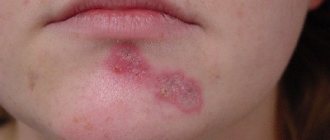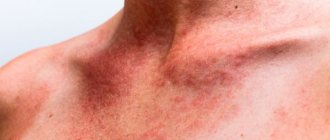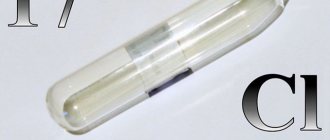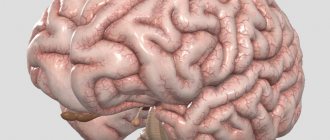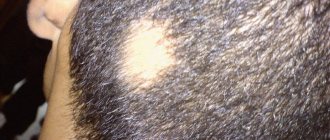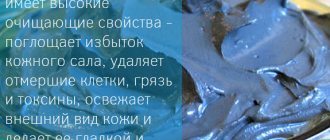What are wax plugs in the ears? How can you get sulfur plugs? Read about this in this article.
Ear wax is a very common situation. For a long time, until this conglomerate, consisting of a secretion product of special ear glands, blocks the ear canal, a person does not even know about it. He begins to notice it when the accumulation of sulfur increases either on its own, blocking the passage for air and sounds, or when water gets into the ear, causing the conglomerate to swell. Then the person notices that he has difficulty hearing in one ear, feeling congestion in it, his own voice takes on a sound “like coming out of a barrel,” and dizziness and nausea may appear.
In this case, trying to clean the ear with dense instruments is a bad idea: in this way you can only push the conglomerate further, where the diameter of the passage is even narrower. Removing wax plugs at home is only possible by dissolving it with means such as 3% hydrogen peroxide or the like. It is better for the child not to risk removing the accumulation of sulfur on his own, but to visit an ENT doctor, since in childhood the reasons for the formation of such conglomerates are different, and under the plug there may well be otitis media and even perforation of the eardrum.
After washing out the compressed sulfur with a warm solution of sodium chloride, furacillin, dioxidine or warm boiled water (if the washing was done at home), the hearing will not immediately return to normal. There will be a temporary feeling of stuffiness after this procedure, which will go away later.
Ear structure
The external auditory canal is a “tube” that is a “conductor” of sounds from the external environment to the area of the eardrum. Its initial section is framed by the ear cartilage, which serves as a kind of “locator” that collects and conducts sound waves. Closer to the eardrum, the auditory canal already lies inside the temporal bone, so this part of it is called the bony part. Here, sound vibrations are transmitted to the eardrum, it vibrates and transmits this to the bones, and their swaying sets in motion a special fluid that is located in the inner ear, in the so-called “cochlea”.
Since the main part of the ear is located in the cranial cavity, not far from the brain, and is an almost open structure (only the eardrum separates it from the external environment), the body tried to protect the ear canal as much as possible from the possible entry of microbes. For this purpose, in addition to the sebaceous and sweat glands, there are special glands - sulfur glands; there are about 2 thousand of them in each ear. Their secretion, being viscous, ensures that microorganisms, dust or accidentally flying small insects stick to it. After immobilizing potentially harmful substances, earwax treats them with antimicrobial substances, and then it must be gradually removed from the ear during jaw movement (when we chew or talk).
The sulfur glands have the same feature as the sebaceous glands: if you constantly cleanse the skin of the products they produce, it will “tell” the nervous system that there is not enough secretion, and the latter will stimulate the glands to work even harder. Normally, only 15-20 mg of sulfur is produced per month and it is removed on its own: a person only needs to periodically wash his ears and blot them with a napkin.
Main reasons
The following categories of people are exposed to increased secretion of sulfur:
- people whose work involves increased dust generation;
- those who frequently use headphones or hearing aids;
- poorly performing hygiene procedures;
- people with certain features of the physiological structure of the ear.
In human ears, wax formation occurs constantly. This is a secret that performs a protective function against the entry of various microorganisms and fine dust into the ear opening. For necessary hygienic cleaning of the ear, so-called ear sticks are often used. This is extremely incorrect, and here’s why: wax should come out of the ear canal on its own, so cleaning the ears should be done with a soft swab twisted from a piece of cotton wool, and only from the outer part located near the ear opening. When cleaning the ears with a stick, some of the wax is still removed, but the main part penetrates deep into the ear, becomes denser and gradually forms a wax plug, which subsequently causes a lot of trouble.
What is earwax made of?
Before we tell you how to remove wax plug, here are a few more interesting features about it. So, it consists of:
- fats, primarily cholesterol;
- proteins;
- desquamated skin cells;
- enzymes;
- hyaluronic acid (a substance that attracts water and retains it);
- immunoglobulins and lysozyme - structures that protect against viruses and bacteria.
After the onset of puberty, the secretion of the sulfur glands of men and women begins to differ in content. In women, it should be such that it would provide her sulfur with a more acidic pH. Also, the composition of this secretion will differ among representatives of different nationalities.
Compresses for the inner ear
The following compress is suitable for home use:
- Grind a clove of garlic thoroughly into a paste and add 3 drops of camphor oil to it.
- Place everything to heat in a water bath.
- Make a tourniquet from the bandage and soak it in the prepared product.
- Place the tourniquet in the ear and leave for 20 minutes. It is important that nothing causes discomfort.
- After the burning sensation appears, you need to hold the tourniquet for another 7 minutes.
- After the time has passed, rinse your ear with warm water.
Why do sulfur plugs form?
It is not enough to simply clean the wax plug: if the conditions that provoke its occurrence are not removed, it will form again, which will affect the quality of life. So, the following factors provoke compression of the secretion of the sebaceous glands and blockage of the ear canal:
- Poor ear hygiene. This is the most common cause of wax buildup, especially in children. Improper hygiene means:
- frequent irritation of the skin of the ear canal with an ear stick or hard improvised means, which further increases sulfur formation;
- pushing wax deep into the ear canal with cotton swabs, matches, rods, pins;
- You need to clean your ears no more than 2 times a week and you should do this by simply blotting your ear, which has been washed under water, with a clean napkin or towel.
- Genetic predisposition. It may consist of one of the following factors:
- the more viscous composition of the secretion of the sulfur glands, inherited, will accelerate the process of clogging of the ear canal;
- genetically programmed narrowness or excessive tortuosity of the ear canal will also contribute to the accumulation of sulfur;
- the growth of a large amount of hair in the ear canal is not always a sign of atherosclerosis; sometimes it is inherited;
- if sulfur is formed of normal consistency, but a lot of it is secreted, it can also be compressed into a conglomerate - sulfur plug.
- High humidity or frequent exposure to water (for example, among divers or swimmers) in the ears leads to swelling of the volume of wax that the body has prepared to come out. If you recognize yours in this situation, you need to take care to remove the sulfur plug as soon as possible: conditions of high humidity are created between the eardrum and the conglomerate, in which microbes that enter with water quickly multiply. Antimicrobial molecules from sulfur are unable to resist this.
- Being in an area with changes in atmospheric pressure also contributes to the formation of traffic jams. This is due to vibrations of the eardrum, which, either retracting inward (if the pressure decreases) or bulging outward (if it increases), helps to compact the sulfur secretion.
- Elderly age. Sulfur plugs are formed due to a combination of three reasons:
- deterioration of ear hygiene;
- hair growth in the ear canal;
- more viscous secretion.
- Frequent inflammatory diseases of the ears, which change the viscosity and pH of earwax, are the second main cause of ear plugs in children. This is why you should not remove wax plugs for a child at home: inflammation may be “hidden” under it.
- Working in a dusty factory. Earwax is a viscous substance, so dust particles easily stick to it, forming a dense conglomerate. In addition, when the existing sulfur is quickly covered with dust, the body “gives the command” to form even more sulfur, which further increases the sulfur conglomerate.
- The use of headphones, frequent conversations on the phone, especially through the Blue mechanism. In this case, a person deliberately “disconnects” the auricle from participating in sound transformation; in addition, the device increases the humidity in the ear canal.
- Increased blood cholesterol levels. This both causes excess hair growth in the ears (the mechanism is unclear) and increases the amount of wax produced.
- Skin diseases (eczema, psoriasis, dermatitis), which, affecting the area of the ear cartilage or the cartilaginous part of the ear canal, complicate the removal of wax from the ears.
Complications and prevention
If the plug is removed incorrectly or incompletely, complications can occur. Painful sensations can be a signal for this. In this case, you should immediately seek help from a specialist.
Very often complications develop into chronic diseases of the hearing aid. Sometimes partial or complete hearing loss occurs. Often it is not possible to restore your hearing, so you should not neglect your health.
Most often, complications manifest themselves as follows::
- The ear hurts , the feeling inside the auricle is uncomfortable. These are signs of otitis media.
- Aggressive cleaning often leads to mechanical damage to the ear. Long-term healing occurs.
- The noise indicates that the blockage has not been completely removed, which means that re-clogging may occur.
- If the ear is blocked again , then the problem is in the functioning of the internal organs. Then it’s worth adding peroxide.
To prevent the appearance of ear plugs, no special medications are needed. It is enough to wash your ears well and watch your diet to avoid high cholesterol.
It is important to pay close attention to the microclimate of your home: do not dry out the air in the room or create dust.
Types of sulfur plugs
These conglomerates may be:
- pasty: soft, light or dark yellow;
- plasticine-like: their color is brown, and their viscosity is like plasticine;
- solid: they contain practically no water, and the color can vary from dark brown to black;
- epidermal. This is a special phenomenon, the origin of which is not clear. This plug consists of sulfur, particles of the upper layer of skin (epidermis), has a gray color, stony density and often causes inflammation of the middle ear. Scientists believe that these formations occur either in people with congenital syphilis, or in those who have other general biological changes in the body (deformations of nails, teeth). Often such masses form on both sides and are capable of growing towards the eardrum, destroying it.
When an ENT doctor examines the ear, he evaluates which plug is present in this particular case. So he decides whether the sulfur conglomerate can be washed out, or whether it will have to be removed using a dry method.
What to do about ear plugs in a child
The situation seems more dangerous if the wax is compacted in the child’s ears. In this case, if you do not know for sure how the sulfur is washed out, it is better not to do it yourself. The risk of injury is too great, and if there are hidden diseases of the ENT organs, the baby may lose hearing.
If you decide to have the procedure, follow the recommendations:
- For 3-4 days, instill vegetable oil, hydrogen peroxide or boric acid into the baby's ear canal.
- When the plug softens, fill the syringe with water and inject a stream of water.
- The wax should come out on its own: do not try to remove it with tweezers or other metal objects.
- If the plug does not come out, consult an otolaryngologist.
Dear readers, I strongly advise against performing any experiments on children. If you do not have sufficient washing experience, it is better to go to the hospital. The procedure will not take much time, but you will be absolutely calm about the health of your baby.
How does wax plug manifest itself?
Signs of wax plugs in the ear usually do not appear until the conglomerate fills the entire lumen of the ear canal. They usually appear after swimming or washing your hair, when water gets into the ear and causes the wax to swell. This:
- loss or significant decrease in hearing in one ear;
- noise in the ear;
- feeling of ear fullness;
- obsessive feeling of removing a foreign body from the ear canal;
- a person begins to hear the echo of his own voice in his ear.
Symptoms of a condition where wax plugs in the ears have developed directly near the eardrum and put pressure on it are as follows:
- dizziness;
- yawn;
- cough;
- nausea (as with motion sickness in transport);
- lack of coordination;
- headache;
- There may even be a disturbance in cardiac activity, since the work of the heart is reflexively connected with the nerve endings approaching the ear.
If the accumulation of sulfur exists for a long time, or it was able to create conditions in the ear for the development of microbes, inflammation of the middle ear develops, manifested by pain in it, a feeling of “transfusion” or “gurgling”, the appearance of discharge (sometimes purulent) and an increase in temperature.
If, based on all the symptoms, you see that the child has sulfur plugs, what should you do? The only possible solution is to visit an ENT doctor; fortunately, for this you do not have to wait in line at the clinic, but you can make an appointment (for the same day) with an otolaryngologist at a private clinic. This doctor will conduct a diagnosis, quickly and competently remove the formation, after which he will re-examine the ear for otitis media and prescribe appropriate treatment. Remember: otitis media is a disease that is dangerous due to its complications, especially those that can develop in the cranial cavity. Therefore, self-medication, especially in children, is unacceptable.
Drops for removing wax from the ear
Drops to remove wax plugs in the ears
If a child has wax plugs and he is restless, then the doctor can prescribe drops to the sore ears that will dissolve the plugs. The most commonly used is A-Cerumen .
It is very simple to use : lying on your side, instill the product 2 times a day for 3-5 days. After the drug is instilled, you need to lie down without moving for 2 minutes or more, and then turn over so that the medicine and dissolved sulfur flow out.
But not everyone can use the drug for dissolving sulfur.
Contraindications for use:
- Damaged eardrum
- After ear surgery
- Children under 2 and a half years old
- Allergy to this medicine
Diagnostics
Determining that a child or adult has a plug in the ear is very simple. An ENT doctor may suspect this diagnosis based on complaints alone, and then confirms it with an otoscopy examination. This is an examination of the ear using a funnel or a special light device that does not touch the ear. If the doctor needs to examine the ear without removing wax yet, he can enter it with a special button probe.
No other studies (ultrasound, x-ray or others) will help make this diagnosis.
Reasons for the formation of ear plugs
There are many reasons. To simplify consideration, we will divide them into two large groups. The first group is the reasons associated with increased sulfur formation. Surprisingly, it can be caused by improper ear toilet
We all know from childhood how important it is to wash them daily. But excessive enthusiasm for cleansing procedures can have the exact opposite effect.
As we have already said, sulfur is an essential component of the body's defense system. If you wash it off or clean it off with cotton swabs too vigorously, the skin of the ear will be irritated, and the formation of the substance will increase.
If you continue to actively use cotton swabs against this background, you can easily push a large amount of lubricant further into the ear canal. This will allow it to end up behind the isthmus, which is the narrowest point of the ear canal, and begin to accumulate there. Daily treatment with a cotton swab compresses the mass and compacts it, but does not at all stimulate its removal. This is how a dense ear plug is formed.
Another reason for increased secretion is previous diseases, such as otitis media, eczema or various dermatitis. All of them lead to irritation of the ear canal and increased production of yellow mass. The same effect can be caused by a foreign body entering the ear canal and too high air humidity. If there is too much dust in the air, this also provokes the formation of ear plugs. That is why the likelihood is much higher for miners, tobacco factory workers and millers. The use of hearing aids and headphones that are inserted into the ear also contributes to the problem.
The second group of reasons is the anatomical features of the ear structure. In some people, the external auditory canals are too narrow and tortuous, which prevents normal self-cleaning.
Treatment
To get rid of the conglomerate formed by the “efforts” of the sulfur glands, it must be removed. The doctor can do this using two methods – “wet” or “dry”.
"Wet method"
This way you can wash out the wax plug. The method is painless, but unpleasant. It consists of the following:
- the patient sits on a couch or chair, turns to the doctor with the sore ear;
- an oilcloth is laid on his shoulder, on which a metal kidney-shaped tray is placed;
- the doctor fills a large syringe (Zhanet) without a needle with a warm sterile solution;
- inserting its tip into the ear, injects a stream of solution along the upper wall of the auditory canal.
In some cases, this procedure does not immediately clear the accumulation of sulfur, which requires repeating it two or three times. Between procedures, the ENT specialist may recommend dropping drops into the ear:
- 3% hydrogen peroxide 2-3 drops 3-4 times a day. The solution should remain in the ear for 2-3 minutes, after which it is drained;
- A-Cerumen: 1 ml in each ear (1 bottle will be used immediately for 1 instillation) twice a day. A-Cerumen is not used in children under 2.5 years of age;
- “homemade” or prescription (ordered in special pharmacies with a prescription department) drops consisting of 1 g of soda mixed with 20 ml of glycerin and 20 ml of boiled water.
"Dry method"
Sometimes the doctor has to pull out the wax plug. This is done in case of dry formations, only by an ENT doctor, under visual control. The doctor inserts a special ear hook into the ear, with the help of which the conglomerate is removed piece by piece.
Should I delete it?
Excessive accumulation of wax must be removed, if only because it interferes with the passage of sounds and air into the ear cavity. But this is not the only reason. Leaving the plug inside the sink for a long time can cause tissue inflammation and complete deafness, and hardening of the substance can damage the hearing aid.
If at least one of the listed symptoms appears, you should contact an ENT specialist. The specialist will conduct an examination with a special device and select the optimal treatment method.
Medical ear cleaning is performed on an outpatient basis right in the doctor's office. The procedure does not take much time and usually does not cause much discomfort. The main thing is to seek a consultation in a timely manner and not delay. If for some reason it is not possible to visit the clinic, you can cope with the problem yourself using several simple and proven methods.
What can you do at home?
You can try to get rid of wax plugs at home if:
- the ear does not hurt, but is blocked, and it appeared after water procedures;
- We are talking about an adult;
- when pressing on the cartilage of the auricle (tragus) sticking forward (closest to the face), it does not hurt;
- body temperature is normal.
For this purpose you can:
- For 1-2 days, drip the ear with peroxide, A-Cerumen or a soda solution (can be done without glycerin), as described above;
- find a ballpoint pen from which you can make a tube by removing the rod and those parts that hold the rod inside;
- get into the bath;
- adjust the water so that it is 37 degrees and the pressure is not strong;
- unscrew the shower head and place a straw from the handle in its place;
- carefully, tilting your head so that your ear “looks” down, pour water into your ear for about 3 minutes, holding the shower with one hand and the tube with the other, and the second end of the tube should be loosely leaning against the entrance to the ear canal;
- There should be no pain, you can also see how the plug comes out. You can “help” her by inserting the tip of your little finger moistened with water into the ear canal;
- even if this does not happen, do not try again immediately, it is better to re-drip the ear with 3% peroxide;
- if the plug comes out, you need to drip the ear with Ciprofloxacin, dioxidin from an ampoule, Okomistin or other antiseptic drops.
You can also buy a solution of furacillin or make it from tablets (you can use a physiological solution of sodium chloride, put it in a “bulb” syringe No. 14, place it in warm water so that it warms up to 37 degrees and rinse the ear with a gentle stream, without pain. At the same time, the second hand pulls the auricle back and up so that the stroke is smooth and the stream is not very strong.
Special herbal candles are officially approved for removing traffic jams at home and must be used with an assistant. They are hollow tubes with essential oils applied to the inner surface. One part of the tube has a tip and foil: it is inserted into the ear after lighting the upper section of the phytocandle. The candle must be removed and the flame must be extinguished when it reaches the mark on the candle body. The effectiveness of this method is 30-40%. It works by creating negative pressure in the tube during its combustion, which draws out the sulfur.
We do not recommend continuing any manipulations with your own ears at home if they were unsuccessful the first or second time or were accompanied by minimal pain. Otolaryngologists are accepted in many private centers, which are quite easy to get into after work and without any referral.
Consequences of deletion
Clearing wax from the ear usually does not cause any problems. The procedure is quite simple if you respond to the problem in a timely manner and carry out all therapeutic procedures carefully. You should not remove the plug yourself if there is inflammation in the ear cavity, any discharge, or severe pain. Caution does not hurt in the case of cerumenolytics, to which allergies are possible.
Failure to comply with basic rules and medical instructions is fraught with:
- injury to the ear canal and eardrum;
- dryness of the mucous membrane, especially with uncontrolled use of hydrogen peroxide and other antiseptics;
- infection of the inner ear;
- allergic reactions to components of solvent preparations;
- burns and overheating of the hearing aid due to thermal procedures.
It is effective to wash the ear plug at home on a regular basis, as a preventive measure, to avoid inflammatory processes and unwanted complications.
Preventing traffic jams
Take the following steps:
- There is no need to clean the ear canal more often than once every 7-10 days. Do this with a cotton swab with a limiter, which is only slightly inserted inside the ear and rotated left and right, and not back and forth.
- Control your cholesterol levels.
- People working in dusty environments should protect their ears.
- Those who have to dive, use hearing aids, headphones, or be in conditions of high humidity periodically (once a month) need to use A-Cerumen drops or similar preparations.
- Get eczema, dermatitis or psoriasis treated promptly by qualified dermatologists.
Author:
Krivega Maria Salavatovna resuscitator
Bottom line
The accumulation of wax in the ears is a normal phenomenon and is not considered pathological. The natural process of releasing sulfur substance is inherent in nature. Under unfavorable circumstances, it accumulates and clogs the ear canal.
It is not difficult to rinse out ear plugs at home. To do this, there are several effective methods aimed at softening and easy cleaning of the auricle.
An important rule is to do everything carefully and correctly, and coordinate the use of medications with a doctor. But it is better to prevent such a situation by following preventive recommendations. Then your hearing will always be sharp and your health will always be good.
How to help a sick child
A special feature of the “children’s” wax plug will be its relative softness (in children, characteristic hardening and severe blockage are less likely to be observed). In this case, the auditory canal in a child is much narrower than in an adult, so you should act more carefully.
The main feature will be the behavior of the baby, who may either not understand the essence of what is happening, or may react too painfully to a generally simple procedure. Contacting a doctor in this case will avoid many problems, and help will be provided quickly and effectively. Your task is to ensure the most calm and level body position, otherwise there is a risk of accidental injury.
Washing a child's ears
Irrigation is not easy for small patients because they cannot sit still. This procedure will require at least two people, the second one is needed to secure the baby. The adult sits the child on his lap and pinches his legs with his legs. One hand holds the child’s hands tightly, and the other holds the head in a certain position. Such measures are simply necessary, because if the baby twitches during the procedure, even a non-sharp syringe tip can damage the septum.
For young children, the same compositions are used when washing the ears, with the exception of the concentration and dose of the infused liquid. Children in the first years of life are often prescribed a solution of furatsilin.
Candles
Special suppositories from the pharmacy help get rid of sulfur plugs. The product helps soften the seal and eliminate the inflammatory process. During the procedure, the inner ear is warmed up and immersed in a vacuum due to the burning of a candle.
To get rid of sulfur compaction, you must additionally prepare baby cream, cotton swabs and swabs, matches, a napkin and water. Next, the following actions are performed:
- Before removing the plug, the outer ear is massaged with cream.
- The person lies on his side, and the open ear is covered with a napkin with a cutout for the auricle.
- The lower edge of the candle is inserted into the ear, and the upper edge is lit with a match.
- A small part of the candle should burn down to the mark, after which it is removed from the ear canal and extinguished with water.
- Remove the remains of the candle from the surface of the organ with a cotton swab. To preserve heat, cover the ear with a tampon for 10 minutes.
Washing methods
There are different methods that help you both get rid of ear plugs that are interfering with the normal functioning of your hearing aid, as well as warm the ear as a whole.
Flushing with a syringe
Take an ordinary syringe without a needle and warm water. The syringe is filled with water and does not plunge too deeply into the ear canal. Next, the water pressure is released. Afterwards, the head tilts to the side, due to which the water flows out of the ear, washing out the plug along with it. The end of the procedure will be thoroughly wiping the ear with a soft cloth.
The procedure is daily, its course is one week. During this time, the cork is completely washed out by the liquid.
Washing with enema
To carry out the procedure, you will need a medium-sized hydrogen peroxide enema. The first step is for the person who has a plug in his ear to lie on his side for comfort. Next - instill 3 drops of peroxide into the clogged ear. Peroxide that gets into the ear dilutes the accumulation of wax. You should wait 5 minutes without changing your body position to achieve the maximum softening effect. Five minutes later, warm water is drawn into the enema.
The enema does not go deep into the ear (it rests against the ear canal - no further).
It must be squeezed as hard as possible to create a powerful pressure.
Particles of the plug during this action will be removed from the auricle along with the infused water.
If at the end of the procedure a person still feels discomfort, and his hearing has not fully recovered, the plug has not been completely removed. In this case, washing is carried out several more times until the unpleasant symptoms cease to bother you.
Rinsing with a shower hose
If you were unable to get rid of the blockages yourself using the previous methods, it means that the ear canal is too clogged.
In this case, rinsing with a shower hose without a spray nozzle will help quickly remove wax.
In order not to cause mechanical damage to the eardrum, it is important not to overdo it with increasing pressure.
The hose is placed close to the ear, and warm water is turned on. The pressure gradually increases. The procedure is highly effective, allowing you to remove wax blockage at home in one go. Immediately after the procedure, hearing is restored and unpleasant symptoms disappear.

